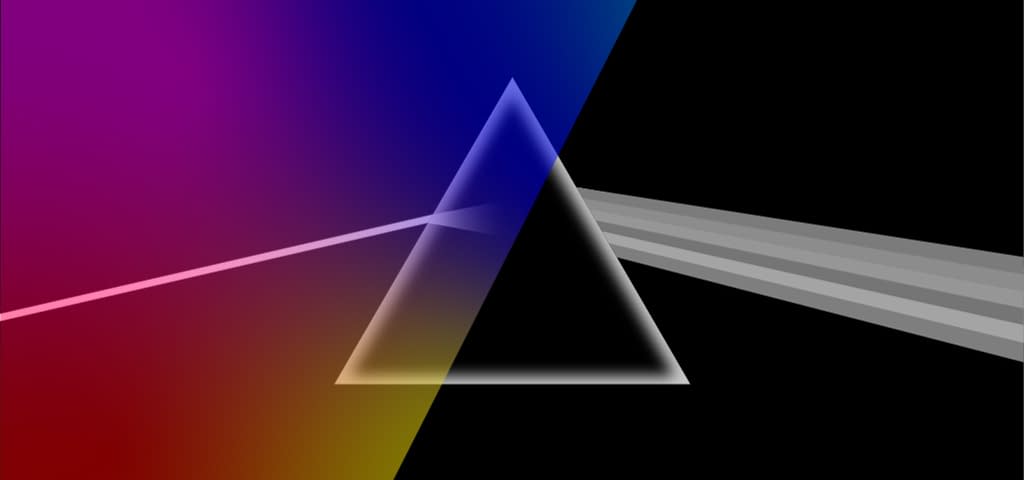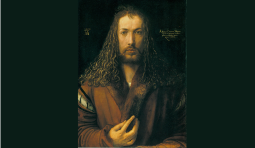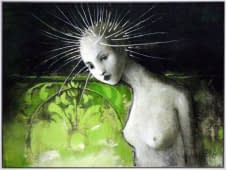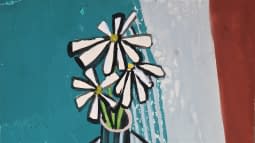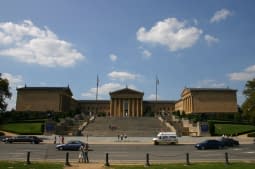Rainbow #10 - The Rainbow from the Mid-20th Century Onwards
The Rainbow - Between Mass Media and a Symbol of Peace and Free Love
What does the rainbow represent in modern art and what is left of its once mythological and religious imagery? In the following blog, we look at a selection of works and representations of the rainbow. From modern painting, photography and album cover art, to its shift in meaning as a political symbol, as well as its multiplication through the mass media, particularly in advertising and film from the 1970s onwards.
The rainbow was increasingly depicted in the mass media and used for various products or narratives as a result. An early example is the advertising for Jester Wools, which produced wool products. An example from the film industry is the film "Rainbow Bridge" by Chuck Wein, which is about the counterculture of the late 1960s.
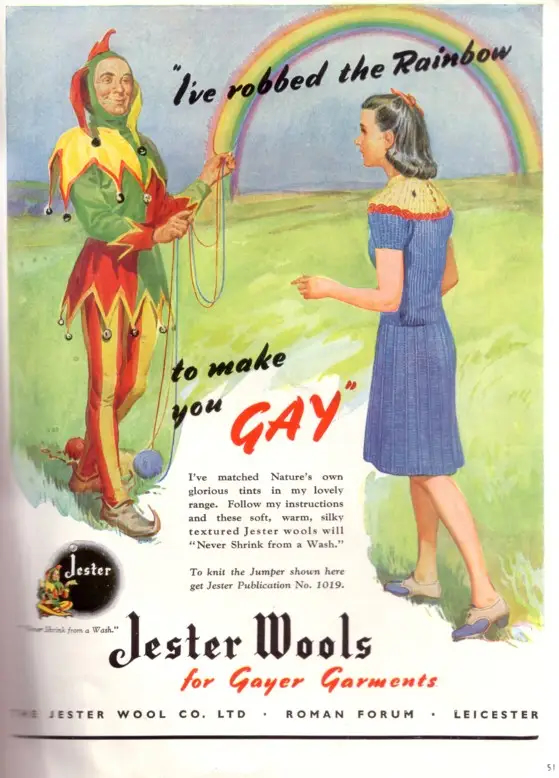
Fig. 1: An early advertisement from the 1940s by Jester Wools for their wool products. The word «gay» meant «happy» at the time and has since changed its meaning. Photo: businessinsider.com.
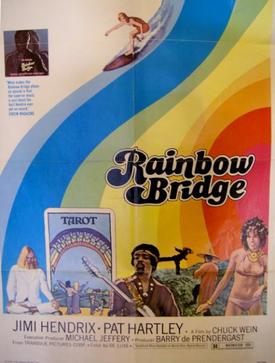
Fig. 2: A promotional poster for the 1971 film "Rainbow Bridge" by Chuck Wein.
Many activist movements started in the 1960s and 1970s. During this time, the rainbow became a powerful political symbol. Starting with the 1961 peace march in Italy, the rainbow flag became a symbol of the peace movement as the «Pace flag» (italian meaning «Peace») and was used for protest movements against wars worldwide from 2003 onwards as a result of the Iraq war.
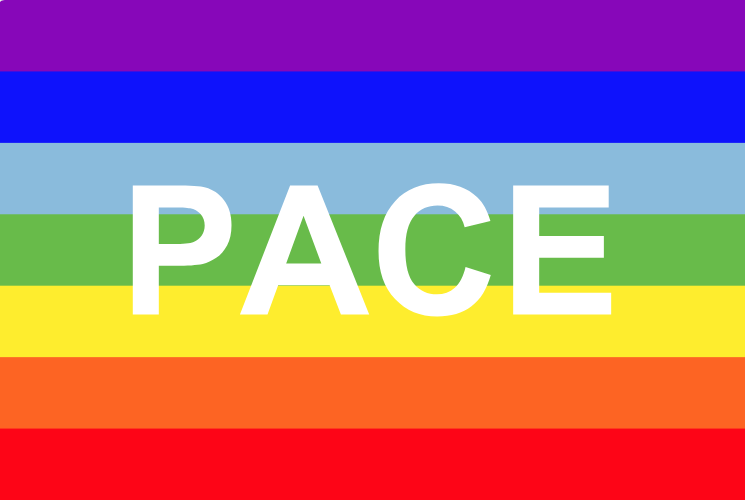
Fig. 3: The rainbow flag of the peace movement, which is used worldwide today. Photo: Wikipedia.org.
In hippie culture, the rainbow stands for the unity of humanity. Particularly on the west coast of the USA, where the movement originated, house facades were increasingly painted with rainbows.
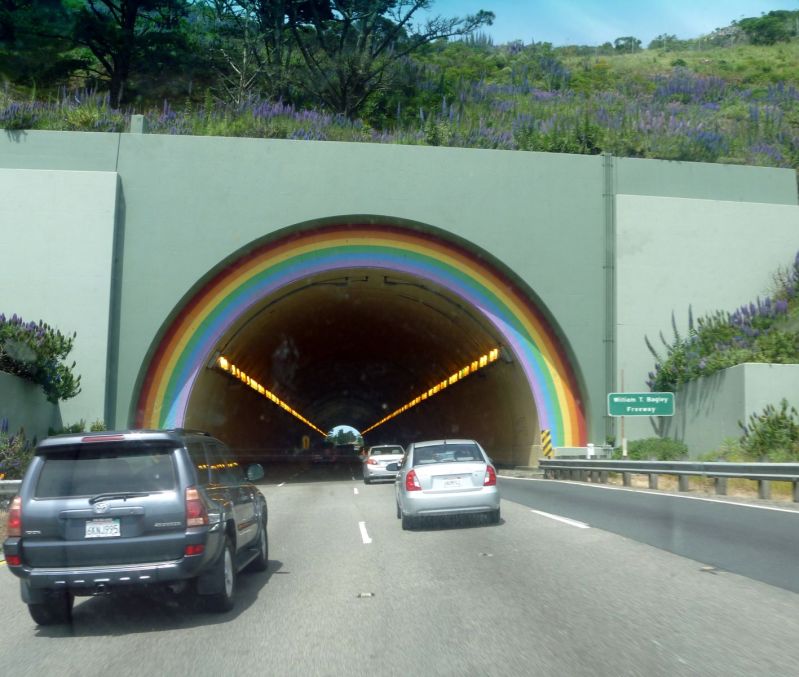
Fig. 4: The Waldo Tunnel, which was renamed the «Robin Williams Tunnel» in 2015, is located between San Francisco and Sausalito and is also known as the «Rainbow Tunnel». The rainbow painting dates back to 1969. photo: wikidata.org, CC BY-SA 3.0.
All these movements brought the symbol visually to the streets. From the 1960s onwards, the rainbow was also increasingly found wrapped around the human body on clothing, which has always been an expression of identity. On the one hand, the rainbow on clothing creates a symbolic level for the individual, but on the other hand it also allows identification with specific groups. As incidental and purposeful as clothing often is, it can also take on an important political function and make affiliations and attitudes visible. Thus, in addition to the reference to nature, the rainbow now also contains connotations such as «healing, reservation, calm, reassurance, joy, happiness, love, peace, freedom» (orig.: «Heilung, Reservat, Ruhe, Beruhigung, Freude, Glück, Liebe, Frieden, Freiheit» in «Regenbögen für eine bessere Welt, Trilogie III, Württembergischer Kunstverein», p. 240).
Since the 1970s, the rainbow flag has also been the international symbol of the lesbian and gay movement, with each colour having a specific meaning. It was designed by the American Gilbert Baker for the Gay Freedom Day in June 1978, which was the origin of the Gay Prides. The flag originally consisted of eight colours and was then reduced to seven. The symbol was repeatedly modified or expanded as other gender identities and sexual orientations were added to the flag, such as trans people or non-binary people. In general, the flag symbolises the diversity of lifestyles and identities, especially those that have been marginalised and unfortunately still are today. The rainbow flag symbolises the pride of the existence of these lifestyles and the pride of the people who are part of the LGBTQIA+ community.
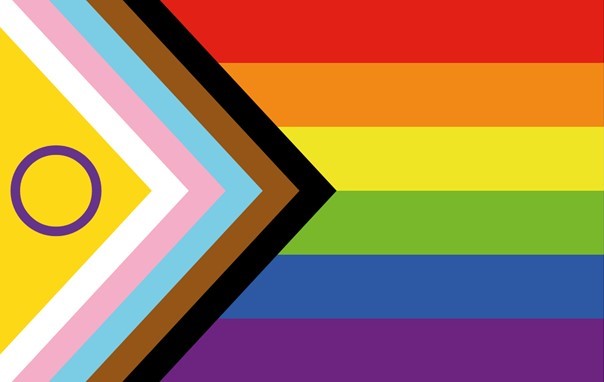
Fig. 5: The redesign of the Progress Pride flag for the integration of intersexuality by Valentino Vecchietti (2021). Photo: Wikipedia.org.
The Rainbow in the Arts - Minimal Art
Alongside these new political uses of the rainbow, the art of modernism also increasingly broke away from religious ideas and approached the world and its natural phenomena from new perspectives. New materials and technical possibilities had an increasing influence on perception and awareness, which in turn made new forms of design and expression possible.
«Rainbow Pickett» (1965/2004) by artist Judy Chicago is one of six room-filling sculptural installations. Six trapezoids of different lengths and colours made of monochrome painted canvas, stretched on plywood frames, are arranged on the wall at an angle of forty-five degrees in decreasing size. Although Chicago's work is in dialogue with the art movement "Minimal Art", which works with reduced forms of representation and colours, its pastel colour palette also subverts it.
Dan Flavin was another artist who devoted himself to rainbow colours, not by applying paint but through light installations. Colourful neon lights focus on form and colour, with the cool light of fluorescent tubes reminiscent of advertising and underground stations, which were now increasingly shaping our world. These primary light sources show us colour for what it is: something physical. They change our perception of space and create a reduced visual experience based on optics. At the same time, the neon tubes are taken out of their context and elevated to the status of art.
The Photograph Captures the Prism
In its early days, the relatively young medium of photography had a hard time establishing itself in the field of the arts. Although the painting «Rainbow» (1970) by Gerhard Richter is traditionally oil on canvas, it is based on a photograph, as is so often the case with Richter. Richter had taken the motif from his «Atlas», a book of collected images, and realised it in paint. It shows a rainbow that divides the sky in which it appears into two sections. The lower section shows an orange-coloured sky, with something black and unidentifiable emerging in its right-hand corner, reminiscent of houses and earthly existence. In contrast, the bluish upper section shows the open sky, in which a second rainbow is delicately hinted at. The tradition of landscape painting is a recurring and central theme in Richter's work, through which he puts viewers in a contemplative state and triggers a feeling of longing.
In this painting, we see a typical stylistic technique of Richter's that underlines this feeling of longing: the blurring of the colour, which creates a visual indistinctness. This simulates an early, as well as a still technically still possible blurring by the camera, which is imitated here by the older medium of painting. He thus picks up on the fleeting nature of the phenomenon, which makes us face nature with a nostalgic feeling and asks us what connects us to it. The traditional landscape motif also creates a link to the era of German Romanticism, whereby something threatening also resonates through the illegible and unclear. However, this also expresses a feeling of sublimity and emotion towards the power of nature and forces us to examine the landscape in the 21st century and our relationship to it. Richter calls these nostalgic-romantic works «cuckoo's eggs» because they surprise us by reflecting on these motifs as well as the concepts of transcendence that accompany them and by confronting us with these ideas.
Excursion into the World of Music: The Dark Side of the Moon - The Human Being between Light and Darkness
The rainbow is also a popular motif in the world of music, be it in song lyrics, music or album titles or in the art of album covers. The album cover of «The Dark Side of the Moon» (1973) by Pink Floyd has a special significance. The cover, designed by Storm Evlin Thorgerson and drawn by George Hardie, shows the refraction of white light through a prism and its splitting into the spectral colours on a black background, but here without the colour indigo, inspired by a photograph in a physics textbook.
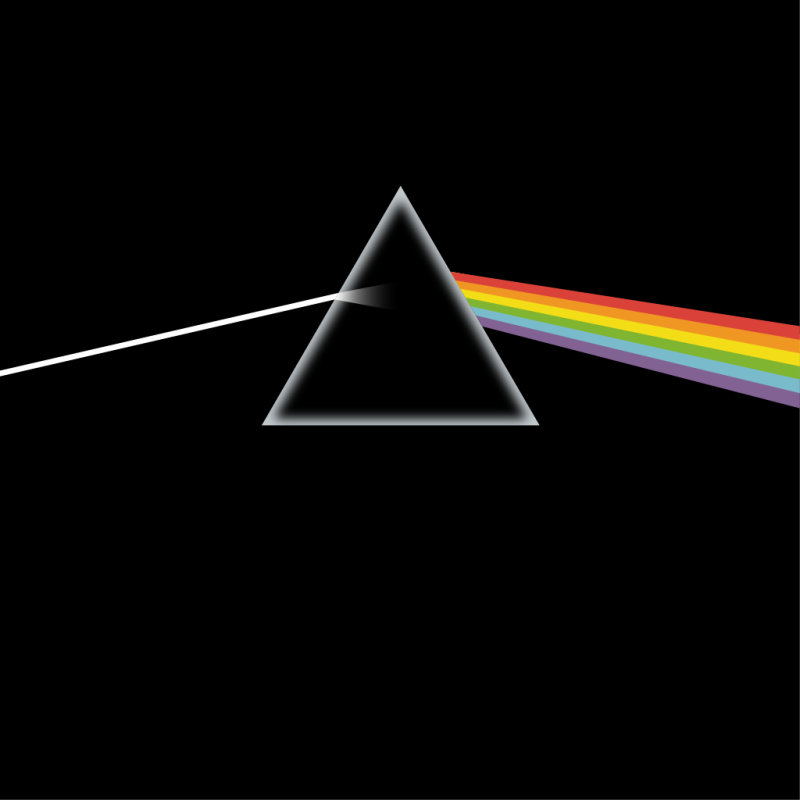
Fig. 6: The cover of the Pink Floyd album «The Dark Side of the Moon» (1973), designed by Evlin Thorgerson and Georgie Hardie. Photo: Wikipedia.org.
The spectral colours are continued in the unfolded parts of the Pink Floyd cover and graphically represent a heartbeat, as can also be heard at the beginning and end of the record. The album title alludes to the moon's ability to reflect sunlight onto the earth, while the other side is in darkness and appears hidden, mysterious and infinite to us. The album is centred around the idea of madness, exploring themes of conflict, greed, time, death and mental illness, which everyone is confronted with and forced to make choices. Thus, a person can decide in favour of the «dark side», but also in favour of the «good side» and throw back light. In between, a process of self-reflection takes place.
The album is therefore strongly influenced by philosophical ideas as well as morals and ethics. The light alludes to the influences that come crashing in on us and influence our lives, bringing order, beauty and hope as well as chaos. These questions also create parallels with the Christian religion. The lyrics of «Time», for example, read: «... and you run and you run to catch up with the sun, but it's sinking» and allude to the idea of the end times and John 1:5: «The light shines in the darkness, and the darkness has not overcome it.» Thorgerson also described the triangle as a symbol for thoughts and goals, the prism for density, power and purity.
The music album, like the cover, is therefore a continuation of human questions, the struggle between «good» and «evil», guided by hope, which is maintained by the beating of the heart at the end of the album. A continuation of questions of human existence and compassion. Topics that have always had their place in art.
The Rainbow as a Trans-spatial Phenomenon and Artistic Identity
The Japanese Fluxus artist Ay-Ō became known for his works with the colours of the rainbow palette, which he created from 1963 onwards. This earned him the nickname «Rainbow Man».
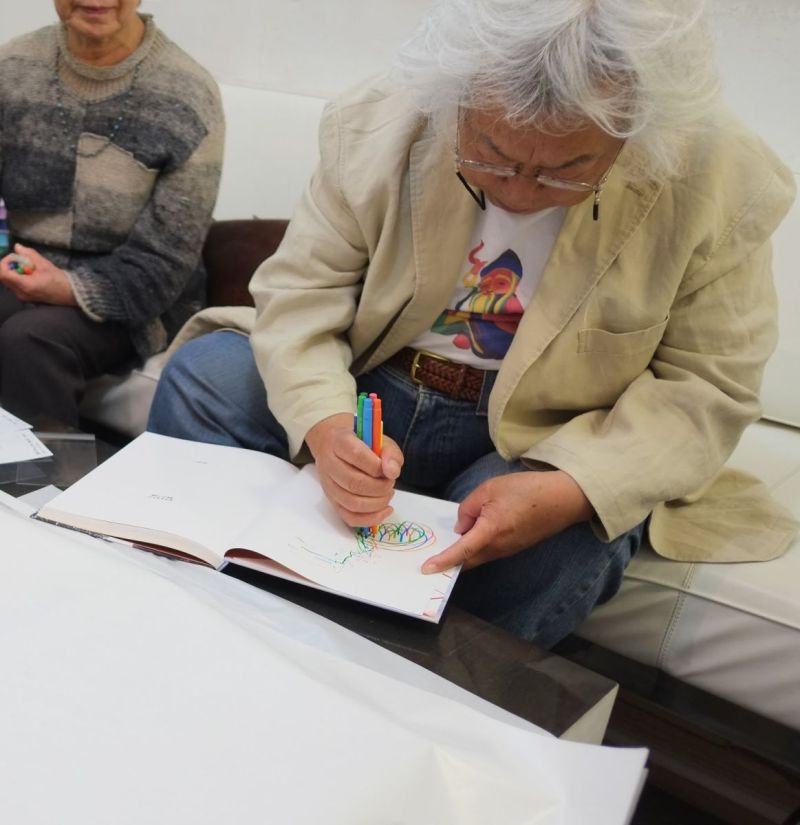
Fig. 7: The Fluxus artist Ay-Ō with a rainbow-coloured T-shirt while signing with several rainbow-coloured felt-tip pens, which became his trademark.
When he worked with aluminium plates, he became aware of the light that was reflected back from the plates and created a rainbow on the wall. He tried to capture this effect more concretely, for example by painting the walls of his studio in coloured stripes from the floor upwards, thus surrounding himself with the colours of the rainbow. From then on, his compulsion to work almost exclusively with the rainbow stemmed from his desire to democratise the use of colour, to create a sense of playfulness and humour and thus to be able to explore his own body and senses. This can be seen, for example, in his «Rainbow Happening» No. 17 from 1987 entitled «300 Meter Rainbow Eiffel Tower Project», in which a banner painted in rainbow colours floated out from the Eiffel Tower. An immersive work of art that enabled people to establish a visual and sensory relationship with the rainbow.
Immerse Yourself in the Rainbow
The selected works represent only a fraction of the new manifestations of the rainbow in the arts and other areas of coexistence. A development towards experimental works of art can be recognised, which are created with the help of natural light, artificial light or architectural elements and are therefore expansive. Form, space, movement and light are at the centre of the rainbow art of the last 50 years of the 20th century.
In the last blog, we will focus on contemporary objects that also explore the rainbow experience with the help of various senses and enable a new view of the world, perhaps even detached from, but inspired by, religion. Works of art that place people and their experiences of the world at the centre.
